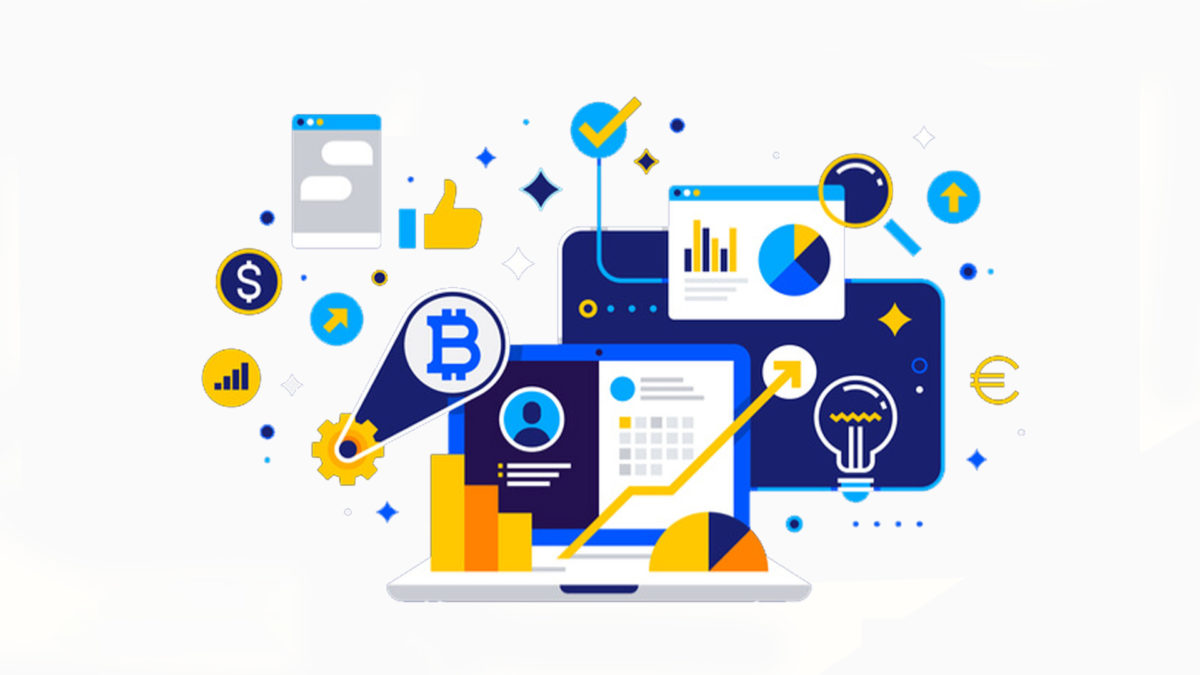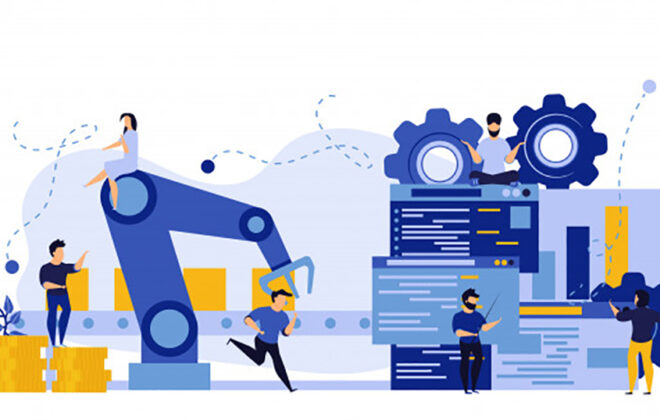4 Inspiring HR Trends That You Must Watch Out for in 2020
HR responsibilities which were earlier confined to hiring resources, managing payrolls, and resolving conflicts have now extended to building employer-employee relationships, fostering work-life balance, nurturing employee-centric culture, analyzing employee data and more. With AI being the front-runner of HR trends in 2020, this industry will further experience a series of changes this year.
Giving her nod to the AI wave, VP – HR Tech at Bersin, Deloitte Consulting LLP, also said,
AI technologies will become a regular part of HR over the next five years as awareness, learning, experience, and the maturity of the technology and usage increases. In fact, over the next three years, a majority of respondents in a survey by Deloitte indicated they expected increased usage of AI by 81%.
With all the constant chatter around AI breaking through in the HR industry, it becomes all the more important to understand what all changes AI is set to bring and how it will impact the ongoing HR trends.
![]()
1. Reskilling of HR Professionals
Reskilling is one of the urgent yet long-lasting HR trends that will rule this industry in current and upcoming years.
According to the 2018 Future of Jobs Report, 75 million jobs will be displaced by 2022 in 20 major economies. At the same time, technological advances will create 133 million new jobs in the industry. Extensive growth in products and services is the primary force propelling these trends.
But to proactively realize the benefits of these changes, at least 54% of employees will need to reskill and upskill.
![]()
HR industry being no exception to this trend would also demand the same. The first step in this direction for HRs would be to befriend automation and use it extensively to their advantage.
They would have to replace traditional methods with evolved and artificially intelligent methods. At the highest priority would be to upgrade the school of thoughts and lean towards analytical thinking, innovation, learning, creative and problem-solving strategies.
Adopting these strategies would help to revamp existing processes and introduce new processes in the picture. For instance, HRs would
- Employ Applicant Tracking System (ATS) to engage and hire candidates
- Draw on AI-powered candidate screening tools to filter qualified candidates
- Adopt digital ways of Learning & Development
- Place analytical insights into key decision making
- Build offline and online employer-employee relationships
- Voice brand story on social media platforms
- Widen workplace diversity using diverse job portals
2. Embedding Intelligence in Candidate Screening
Acquiring talent is a continuous task without any definite end. From screening to hiring to training, recruiters cannot risk remaining absent from any of the hiring stages. Yet, screening resumes and filtering candidate profiles is the most mundane and challenging of all. Seconding this fact, 52% of the talent acquisition leaders have said that screening candidates from a large applicant pool is the most difficult part of the recruitment process.
![]()
Therefore, blending AI in the recruitment process is one of the important 2020 HR trends.
The incorporation of AI in the recruitment process would lift off the burden of everyday humdrum from the recruiter’s head. Known for embedding intelligence in the process, AI systems will handle these tasks by embedding intelligence at all the relevant touchpoints.
For instance, while screening the candidate profiles, AI would factor in history, skills, and experience to evaluate the relevance of the profile. Scanning profiles wouldn’t be limited to the batch of applied candidates. To widen the range of applications and not miss relevant leads, these systems would scan from the stack of referrals, past applicants, social media applications and more.
Incorporation of AI would also cut down the human bias in the screening process – which was a major concern in the objective screening of the applications. Although, the extent to which AI would reduce human bias is a point of debate among the tech pundits. Yet, large numbers of companies are rooting for AI to handle human bias by training machines with unbiased and large sets of data.
3. People Analytics for Improved Employee Experience
Third in the list of 2020 HR trends would be people analytics.
Unlike data analytics, where experts sit and brainstorm on the insights to deduce trends, AI systems would be capable of understanding data patterns, making assumptions and providing advanced predictions on its own. This would tackle the interference of human bias in the promotion processes. If candidates are from diverse backgrounds, there are higher chances of personal judgments fogging the promotions.
Cross-disciplinary hiring will also become a norm with AI evaluating existing employee data and suggesting in-house resources for cross-department vacancies. AI analytics has also proved to be of humongous value while identifying employees who can leave the organization in the coming time.
IBM was able to save $300 million in retention cost due to the 95 percent accuracy of their AI systems in identifying employees who are likely to leave.
Not only hiring and retention phases, but people analytics would affect every phase of human resources. From nurturing human relations and expectations to employee process, employee engagement, and performance analysis.
4. Conversational AI for HR Interactions
![]()
HRs are constantly subjected to a number of employee questions. Leave balance, bill reimbursement, insurance details, salary deductions are just a few of the many questions regularly asked. This persistent need to remain available for any possible employee queries is straining for HRs which at times results in severe work pressure leading to damaged mental health.
This is why conversational AI systems – virtual assistants and chatbots – will be widely accepted by the HR departments. And would be the enticing of all the 2020 HR trends.
Conversational systems will be deployed at all crucial and potential points of contact to minimize any chance of human conversation. Earlier distributed over multiple applications, these assistants will provide centralized access to all the information. In place of toggling between applications, employees would be able to access everything on the virtual assistant or chatbot systems.
Once deployed, it will ease HR’s non-stop requirement of attending to employees – without disappointing anyone. Moreover, with virtual assistants and chatbots making their way into many organizations, Gartner, Inc. predicts that by 2021, 70 percent of organizations will assist their employees’ productivity by integrating AI in the workplace.
Tags In
Subscribe For Updates
Categories
- Accountant
- AI
- Automation
- Awards and Recognitions
- Blue Collar Staffing
- Burnouts
- Campus Recruiting
- Cloud
- Co-Ops agreements
- Company Culture
- Compliance
- contingent workforce
- Contingent Workforce
- COVID-19
- Cyber Security Staffing
- Data Strategy
- Digital Transformation
- direct sourcing
- Distributed Workforce
- Diversity
- Diversity & Inclusion
- Economy
- Events & Conferences
- fleet industry
- Gig Economy
- Girls in Tech
- Global Talent Research and Staffing
- Government
- Healthcare
- Healthcare Staffing
- Hiring Process
- Hiring Trends
- Home Helathcare
- HR
- HR Practices
- HR Tech
- IT
- Labor Shortages
- Life Science
- Local Governments
- News
- Nursing
- Payroll Staffing
- Public Sectors
- Recruiting
- Remote Work
- Skill Gap
- SMB Hiring
- Snowflake
- Staffing
- Staffing Augmentation
- Staffing Challenges
- Talent ROI
- Tech Staffing
- Technology
- Tips & tricks
- Total Talent Management
- UI/UX Design
- Uncategorized
- Veteran Staffing
- Veterans Hiring
- Veterans Hiring
- Workforce Management
Recent Posts
- Automation in Recruiting: From Chatbots to Predictive Screening
- Gig Economy Expansion: The Impact on Talent Pools and Business Models
- Skills-Based Hiring: Why Credentials Alone Don’t Cut It in 2025
- Procurement 3.0: AI & Intelligent Automation in 2025
- Q3 Is Here: Is Your Contingent Workforce Strategy Falling Behind?
Newsletter
Archive
- September 2025
- August 2025
- June 2025
- April 2025
- March 2025
- December 2024
- November 2024
- October 2024
- September 2024
- August 2024
- July 2024
- June 2024
- May 2024
- April 2024
- March 2024
- February 2024
- January 2024
- December 2023
- November 2023
- October 2023
- September 2023
- August 2023
- July 2023
- June 2023
- May 2023
- April 2023
- March 2023
- February 2023
- December 2022
- November 2022
- October 2022
- September 2022
- August 2022
- July 2022
- June 2022
- November 2021
- October 2021
- September 2021
- August 2021
- July 2021
- June 2021
- May 2021
- April 2021
- March 2021
- February 2021
- January 2021
- December 2020
- November 2020
- October 2020
- September 2020
- August 2020
- July 2020
- June 2020
- May 2020
- April 2020
- March 2020
- February 2020
- January 2020
- December 2019
- November 2019
- October 2019
- September 2019
- August 2019
- July 2019
- June 2019
- May 2019
- January 2019
- December 2018
- November 2018
- October 2018
- September 2018
- August 2018
- July 2018
- June 2018
- May 2018
- April 2018
- March 2018
- February 2018
- January 2018
- December 2017
- November 2017
- October 2017
- September 2017
- August 2017
- July 2017
- June 2017
- May 2017
- November 2016
- October 2016




